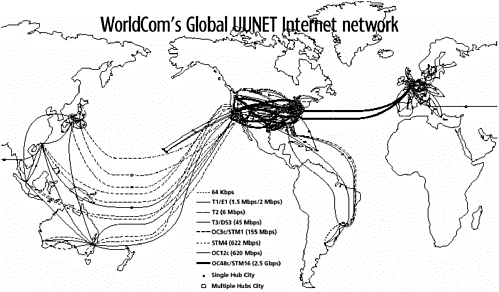

These are fired across a network via the fastest route available – whatever that route is – until they all arrive at their destination, where they are then reassembled. Their idea was called “ packet-switching” and it describes a communications protocol that breaks messages down into small blocks, or packets. It might have stayed like that except for Donald Davies, a Welsh computer scientist, who came up with the same fundamental idea as Baran, completely independently and at almost exactly the same time. He wrote many fascinating papers about it, but at first no-one took him seriously. Baran is one of a few people who, way back in the early 1960s, believed a communications network could be designed with significant physical survivability, to withstand even a nuclear attack. It’s people like Paul Baran, a Polish-born American engineer, who we can thank for this. It’s believed that significant internet disruptions in 2008 that affected countries including Egypt were caused by these sort of cable breaks.īut the effects of these failures in the physical infrastructure of the net aren’t as far-reaching as you might think, because they come up against the original designed resilience of the system. Indeed, cables do sometimes get severed just by accident, for instance during earthquakes or when ships’ anchors slice through them on the seabed. Perhaps cutting the links between such places, then, would be an easier way to break the internet? There are uncountable miles of cables wrapped around the globe, and many of the biggest are just lying there unprotected – albeit often underwater. There has never been a known sabotage attempt at one of Level 3’s many buildings, he adds. They are very hardened facilities,” he says. “We have surveillance everywhere, we take all the appropriate precautions around barricades and those sorts of things. These kinds of important internet facilities are extremely well protected, says Jack Waters, CTO of Level 3 – one of a handful of “Tier 1” network providers that are also crucial, because their big and resilient networks help form the backbone of the internet. This sort of doomsday scenario isn’t very likely or feasible, though. “And if you were able to actually take out all 30 of those buildings, the internet itself would probably largely cease to function.” “You would actually see regional disruptions on the internet,” says Prince. And if any of them were cut off – by a power cut or earthquake, for instance – we would know about it. That, after all, is the whole point of an “inter”-net. These buildings, scattered across the globe, are where networks from providers like Virgin or Comcast come together to exchange their traffic. Matthew Prince, CEO of content delivery network CloudFlare, puts the number of large facilities like Linx at “around 30”. There are bigger exchanges out there, but not as many as you might think. It’s called “Linx”, the London Internet Exchange, and it’s one of the biggest points of traffic exchange on the internet anywhere in the world. But it houses a substantial node in the internet. No hoardings or signage explains to passers-by what it is, or to whom it belongs.

Its grey, monolithic exterior is surrounded by a metal fence and there are security cameras dotted along its windowless walls. Part of the answer lies in London’s Docklands district: nestled just north-east of Canary Wharf is a large, unassuming building. But could you really, literally, break the internet? And if so, does anyone really know for sure what would happen next?

It’s a great piece of contemporary hyperbole. This is because, well, that obviously isn’t going to happen – but we’re searching for some way of exaggerating the impact of the event. That’s why when something goes extremely viral, such as pictures of Kim Kardashian’s bottom or #thedress, we joke about it “ breaking the internet”.


 0 kommentar(er)
0 kommentar(er)
